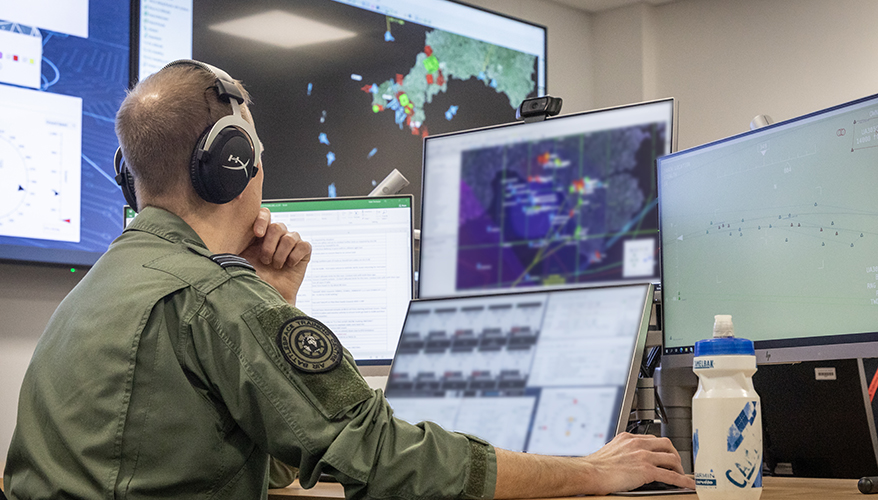TRAINING AND SIMULATION
IT2EC NEWS: RAF Touts Success of Synthetic Trainer for New, Old Aircraft
3/27/2025
By Stew Magnuson
By Stew Magnuson

Royal Air Force photo
LILLESTROM, Norway — Senior U.K. Royal Air Force officers touted the success of the service’s Gladiator live and synthetic training system a little over two years after it reached initial operating capability.The Gladiator multi-domain distributed synthetic training environment was created to bring together live, virtual and constructive training with the Royal Air Force’s 3rd-, 4th- and 5th-generation aircraft, Group Capt. Paul Froome, senior responsible owner of the Royal Air Force Air Capability’s Next Generation Operational Training, said March 27 at the IT2EC trade show near Oslo, Norway.
The system allows the RAF to conduct variations and blends of live along with synthetic training, and constructive elements, with a mix of the nation’s fleets of Eurofighter Typhoon and F-35 jet fighters, P-8 Poseidon surveillance aircraft, E-7 Wedgetail electronic warfare platforms and soon, the new medium-altitude, long endurance Protector drones, he said.
The system also allows for U.K. land and maritime forces and allies to participate in training, whether they are in an actual aircraft or connected on the ground in a high-fidelity simulator. The constructive part allows planners to insert onto screens enemy aircraft that aren’t actually there, but behave as if they were.
Froome said the secret to the program’s success so far is that the RAF owns the system and all its intellectual property. Boeing Defence UK was the contractor that helped them build and maintains the system, but neither it, nor any of the subcontractors, have any proprietary software.
“We designed it, we architected it, and then contracted somebody to build it for us and then run the system beyond that,” he said. All the software that goes into the plug-and-play architecture is commercial-off-the-shelf products, he added. “There is nothing there that has been bespoke built for us. There has been some tweaks to it, but it’s not bespoke products.”
A vendor will supply a synthetic training module for a particular aircraft that plugs into the architecture as along as it adheres to the program’s standards. After that, it can be included in training, he said.
Funding is also an advantage, he said, as the Ministry of Defence has funded the program almost indefinitely.
“I have money through life to make sure that it is evergreen, so that the software products I have in it are always the most relevant, the most capable that we need to train our crews and the environment that we created within that,” Froome said.
The system includes a “white force,” mostly retired military experts who design the training and scenarios and ensure that the constructed enemy forces that pilots may encounter are using the latest tactics, techniques and procedures, he noted.
Squadron Leader Pete Smith, strategy director at the Air Battlespace Training Center, said Gladiator has been used in 12 international training exercises so far, mostly with NATO partners.
“We’ve learned a lot … Since it is MoD owned, that means all the data created within Gladiator is ours to exploit, so we can conduct operational assessments, [and] analyze that,” Smith said.
The steady funding stream means the RAF has the flexibility to continue training without having to stop for further development. “We’ve got the flexibility to do that, which is fantastic,” he added.
Next for the program will be integrating the Protector drone into the training, Froome said. Contractor General Atomics Aeronautical Systems is currently delivering the new fleet and the RAF is building out its squadrons.
While the basic architecture is finished, there will be plenty of opportunities for vendors with off-the-shelf software to join the program in the years to come as the open architecture allows easy upgrades, he noted.
Topics: Global Defense Market
